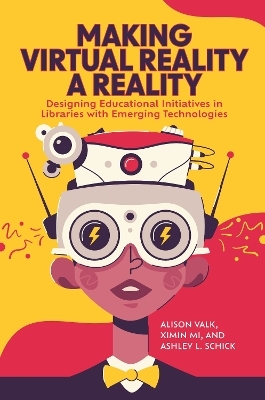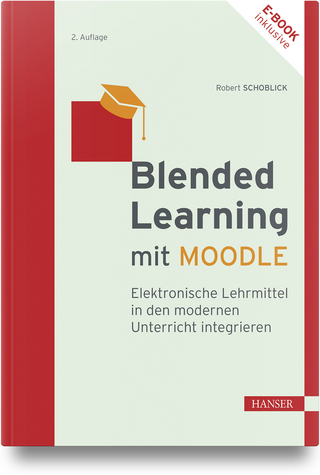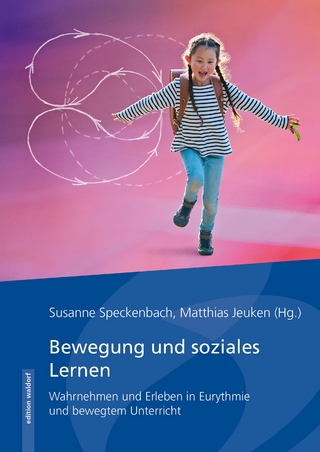
Making Virtual Reality a Reality
Bloomsbury Libraries Unlimited (Verlag)
978-1-4408-7897-8 (ISBN)
As educational curricula and research evolve to include advanced technologies, libraries must offer programming with these emerging technologies in mind, including the use of virtual reality (VR) and augmented reality (AR). In this timely guide, Valk, Mi, and Schick present readers with tools for assessing their level of organizational readiness to begin such programs and, more importantly, how to sustain them with limited budgets, expertise, and resources.
Building on their own experiences, the authors teach readers how to develop technology-rich classes, assess student projects, and overcome technical hurdles. They spotlight this kind of programming as integral to building strategic partnerships in an educational environment. Readers will learn how to adapt and design programs or initiatives in which the necessary technologies are rapidly changing, not only in higher education institutions, but also in schools. Worksheets and resources assist readers in reflecting on their own work and developing educational programming to suit their organizational needs.
Alison Valk is the Instructional Coordinator and Multimedia Librarian for the Georgia Tech Library, USA. Ximin Mi is the Data Visualization Librarian at the Georgia Tech Library, USA. Ashley L. Schick is an artist and art educator.
1. Making Virtual Reality a Reality
Introduction
Innovative Programming in Libraries
Georgia Tech Case Study
Benefits and Uses of VR in K–12 Classrooms
Conclusion
References
2. Getting Started Where You Are: Needs
Assessments and Resource Evaluation
Evaluating Organizational Goals and Community Interests
Matching Student and Stakeholder Skills and Interests
Evaluating Technology
Accessibility Accommodations and Opportunities
Evaluating Budget and Financial Needs
Ongoing Assessment and Cyclic Course Development
References
Resources
Overall Checklist for Needs Assessment
Evaluating Organization Goals and Community Interests
Evaluating Student Interests and Skills
Initial Questions to Ask Students Interested in Joining a Research Class
Evaluating Technologies
Using LEAPS Concepts
Resources to Follow for Current Ed-Tech Trends
Evaluating Accessibility Accommodations and Opportunities
Evaluating Budget and Financial Needs
Grant Resources
Gagne’s Nine Events of Instruction
3. Technology Design and Decisions: Refine
Your Technology Solutions
Background: Device Collection and Space
Designing Technology Solutions
Conclusion
References
Resources
Evaluating Your Organization’s Strategic Goals and SWOT Analysis
Evaluating and Establishing Your Device Collection
Assessing VR Equipment
Evaluating Your Workspace
Project Management Concepts for Project-Based Learning
Starter Questions to Ask Peer Institutions
Locating 3D Models
Project Ideas Based on Time Frames
Evaluating Your Cybersecurity
4. Student-Centric Research Projects: Learning Models That Fit Students’ Interests and Skills
Student-Centric Project Design
Self-Regulated Learning
Instructors as Mentors and Project Managers
Designing Projects and Lessons
References
Resources
Student Questionnaire Ideas
Icebreaker Activities
Peer Evaluation
Scaffolding Projects
Project Team Roles
Project Structure Elements
Template for a Lesson Plan
Rubric Components
A Simple Rubric
Student Reflection Questions
Questions for Users to Answer during Critiques
Exhibition or Open Lab Preparation Questions
5. Sustaining Community through Peer Learning and Partnerships
Community in Education
Building Community
Engaging Community, Nontraditional Educators, and Visiting Artists
Community and Project-Based Learning
Community and Partnership
Applicable Standards as They Relate to Community Integration
Concluding Statements about Community
References
Resources
Identifying Community Partners
Starter Questions to Ask Peer Institutions
Project-Proposal Components for Student Projects
End-of-Project-Report Components for Student Projects
6. Clearing the Hurdles: Initiating Programs That Utilize Emerging Technologies
Stakeholder Buy-In
Student Hesitancy and Technology Phobia
Maximizing Existing Resources and Technology
Documentation Strategies
Implementing Changes Based on Student Input
Project Collaboration and Preservation
Security, Safety, and Access
Project Management
References
Resources
Building Confidence and Reducing Technology Anxiety
Forums and Troubleshooting
Backups and Backward-Compatibility Checklist
Bloom’s Taxonomy of Measurable Verbs
Index
| Erscheinungsdatum | 11.07.2023 |
|---|---|
| Zusatzinfo | 14 bw illus |
| Sprache | englisch |
| Maße | 156 x 235 mm |
| Themenwelt | Schulbuch / Wörterbuch ► Unterrichtsvorbereitung ► Unterrichts-Handreichungen |
| Mathematik / Informatik ► Informatik ► Web / Internet | |
| Sozialwissenschaften ► Kommunikation / Medien ► Buchhandel / Bibliothekswesen | |
| Sozialwissenschaften ► Pädagogik | |
| ISBN-10 | 1-4408-7897-8 / 1440878978 |
| ISBN-13 | 978-1-4408-7897-8 / 9781440878978 |
| Zustand | Neuware |
| Informationen gemäß Produktsicherheitsverordnung (GPSR) | |
| Haben Sie eine Frage zum Produkt? |
aus dem Bereich


